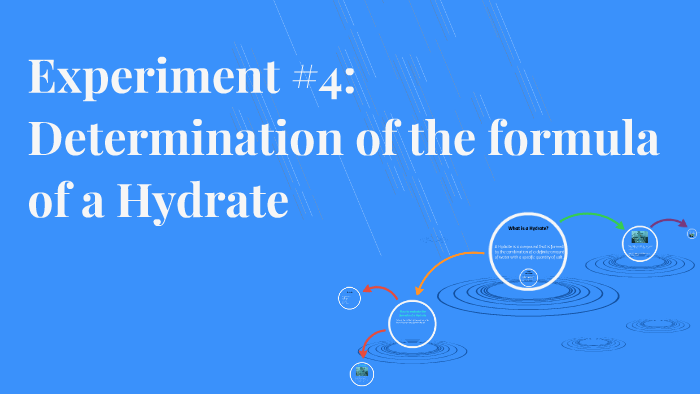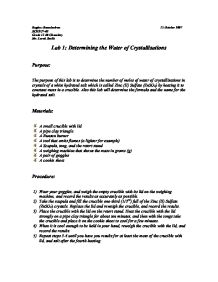

Chemlab hydrate formula plus#

Partially cover the opening of the crucible with the cover. Using your crucible tongs, place the crucible and contents back on the clay triangle.Determine the mass of the crucible, hydrate sample, and crucible cover.Transfer the hydrate sample to your crucible.After you obtain your sample, quickly replce the cap to the reagent bottle and tighten securely. To quickly obtain about 1 g of hydrate sample, take a test tube from your locker and obtain about the same quantity of hydrate, from a reagent bottle, as you find in one of the reference samples. Test tubes containing 1 g of hydrate samples will also be found on the reagent counter.Samples will be found on the reagent counter be sure to write down the identification code.Obtain about 1 g of a hydrate sample and transfer the sample to the crucible.Then determine the mass of the crucible (and cover) to +/- 0.01 g. Thoroughly wipe a crucible and cover with a clean cloth towel to remove dirt and other particulate matter.From the masses of vaporized water and of the anhydrous ionic salt, determine the formula of the hydrate.Heat the anhydrous product to a constant mass., e.g.,.There is a unique ratio of water molecules to formula units in the crystalline structure. Ionic compounds (salts) in which one or more water molecules are bound in the crystalline structure of the salt:

Molecules: Matter composed of more than one atom the atoms are joined by covalent bonds (e.g., O 2, P 4, C 6H 12O 6, TiCl 4).H 2O (covalent exists as separate H 2O molecules).Na 2SO 4 (ionic compound Na 2SO 4 is the formula unit).Compounds: Matter composed of more than one type of atom.Elements: Matter composed of only one type of atom (e.g.Introduction to forms of matter with example of ionic hydrates.Introduction to quantitative analysis: determination of proportions of subunits in a chemical sample.Determining the Formula of a Hydrate Determining the Formula of a Hydrate


 0 kommentar(er)
0 kommentar(er)
